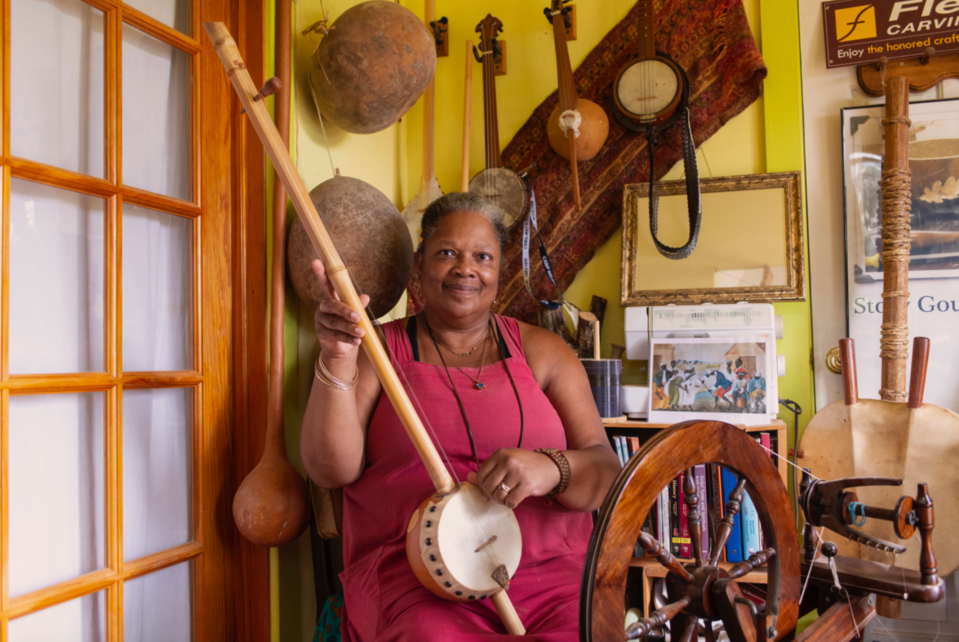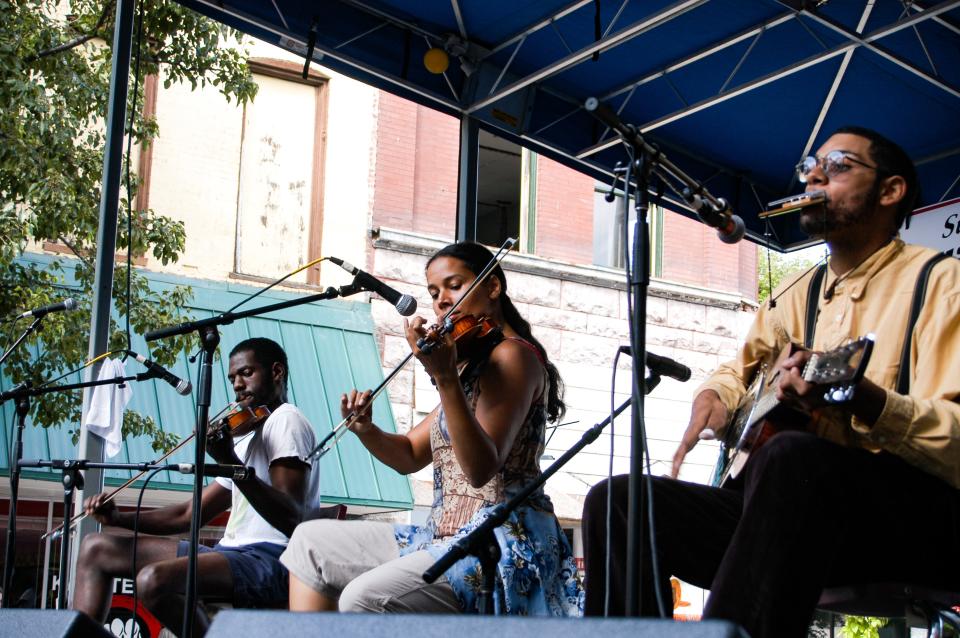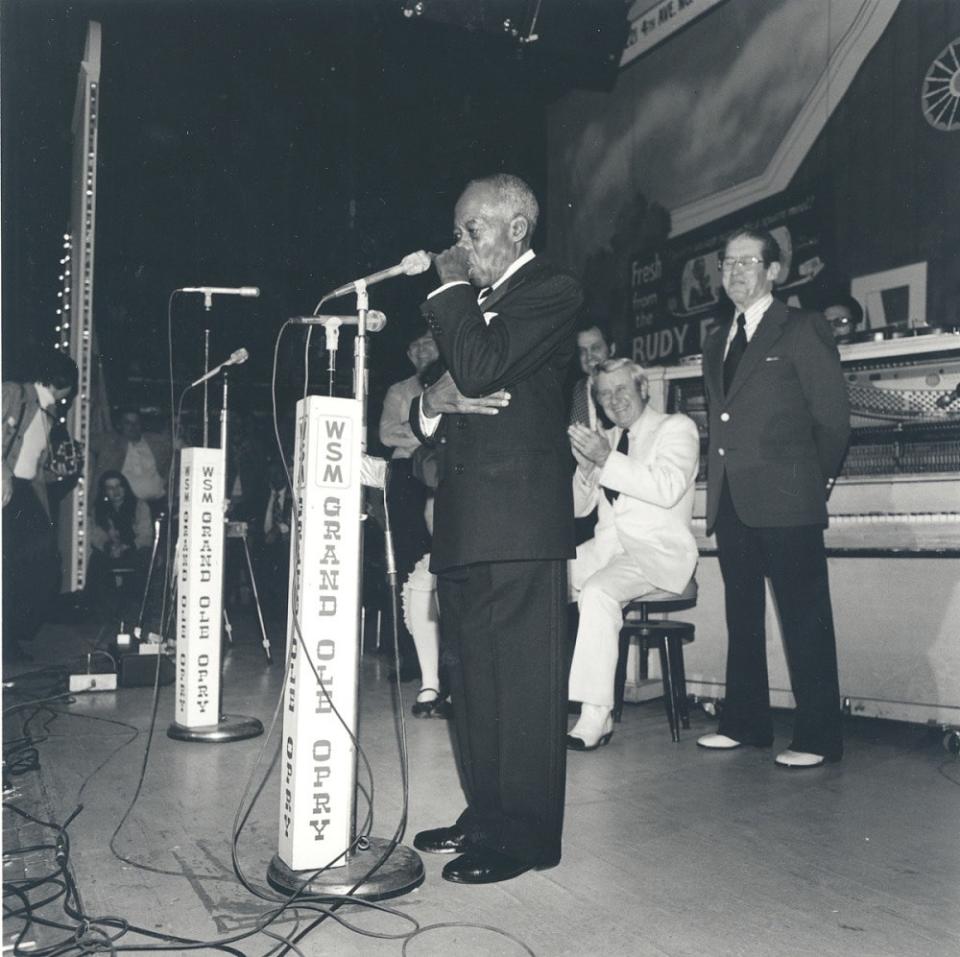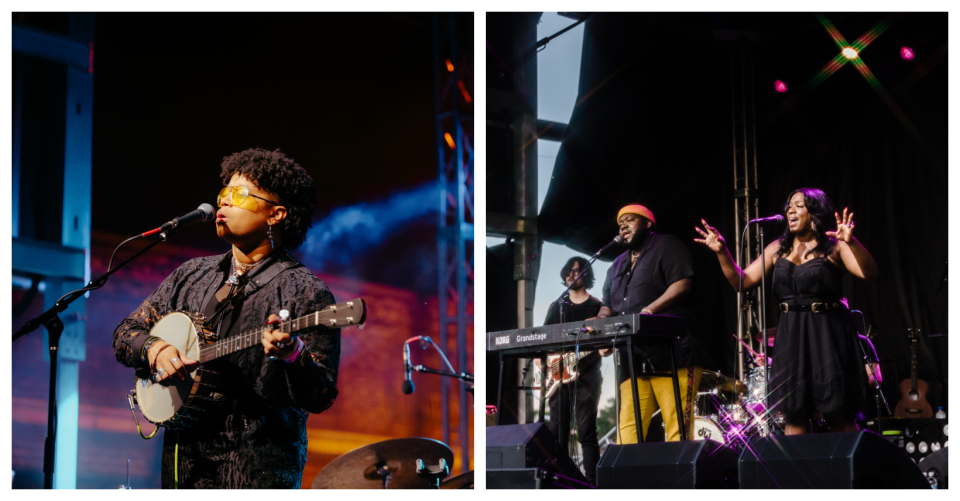Beyonce’s New Album Cowboy Carter and the History of Black Country Music

- Oops!Something went wrong.Please try again later.
- Oops!Something went wrong.Please try again later.
- Oops!Something went wrong.Please try again later.
- Oops!Something went wrong.Please try again later.
Courtesy of Parkwood Entertainment
With the drop of “Texas Hold ‘Em” and “16 Carriages” in February, Beyoncé staked her claim in country music. Within 10 days of its release, “Texas Hold ‘Em” became a #1 charting song on Billboard’s Hot Country Songs, making her the first Black woman to reach the coveted top spot in the genre.
Despite this achievement, there’s a debate about whether Beyoncé’s sound is country, not unlike the conversations that swirled around Lil Nas X’s “Old Town Road” in 2019. However, there is actually a long tradition of Black country music, from the origin of the banjo to the many Black artists who built their careers in the country music genre. If anything, Beyoncé’s new album is bringing attention to this often overlooked history of country music.
The segregation of sound
Although Black history, culture, and artists have always been part of country music, Black performers often receive less airtime. According to a report from SongData, only 1.5% of the 2,100 artists played on country radio stations between 2002 and 2020 were Black — compared to the 98% of artists who were white. Even Beyoncé was affected by this divide. Pop radio stations played “Texas Hold ‘Em” 49 times two days after its release, while country stations only played it twice, according to CNBC.
This lack of representation can be explained in part by the delineation of distinct genres of music. Although music often blurs the lines between genres (such as “indie folk” or “pop rock”) in reality, the development of genre is tied to how record labels marketed and distributed music — and it affects how music is understood and shared today.
When the music recording industry began expanding in the early 20th century, record producers targeted audiences based on their perceived preferences, leading to the marketing of different genres. Two major genres emerged: “hillbilly music” (later known as country music), which was made by white artists and marketed to white listeners, and “race records” (later known as blues or R&B), which was made by Black artists and marketed to Black listeners. However, these two separate genres often shared similar styles and content. So while there were Black artists who played music that fit into the “country” category, they were not marketed in that way.
For example, on the 1927 Bristol Sessions, a series of recordings that helped kickstart commercial country music, El Watson — the only Black artist present — performed two harmonica pieces. All the other songs released from the Sessions were billed as “hillbilly music,” while Watson’s sold under “race records,” despite similarities to other harmonica recordings by white artist Henry Whitter.
Despite this early segregation of sound and the use of genres in marketing, music works very differently on the ground. Musical styles borrow and develop from each other, artists create their own versions of songs and express themselves in different genres, and ultimately, new music is made. It is not uncommon for artists to identify with and play music that falls within different genres, and listeners rarely enjoy just one style of music. Contemporary artist Darius Rucker rose to fame with the rock band Hootie and the Blowfish. He didn’t release his first country album until six years after his first solo album, yet he’s widely known as a country artist today. Cowboy Carter isn’t even Beyoncé’s first country project: her 2006 song “Irreplaceable” was originally envisioned as a country ballad, and she performed a bluegrass-inspired version with the duo Sugarland at the 2007 American Music Awards. The Texas native also performed her song “Daddy Lessons” with The Chicks at the 2016 Country Music Awards.
Black musical traditions
Key elements of country music also have Black origins, such as the banjo. In Beyoncé’s “Texas Hold ‘Em,” the banjo is played by Pulitzer Prize and MacArthur Fellowship honoree Rhiannon Giddens. In addition to her musical talent, Giddens has been instrumental in illuminating the history of the banjo and Black contributions to early country music. In 2019, Giddens collaborated with three other Black female artists — Amythyst Kiah, Leyla McCalla, and Allison Russell — on Songs of Our Native Daughters, co-produced with Smithsonian Folkways and the National Museum of African American History and Culture. The project explores "African American stories of struggle, resistance, and hope," along with the history of the banjo and Black folk music.

Because the banjo is an iconic piece in country and bluegrass music, many people assume it is an American instrument. But the banjo we are familiar with today actually evolved from a related family of African gourd instruments, known by various names such as banjars and banias. The knowledge and memory of these instruments came with enslaved people when they were forcibly brought to the Caribbean and North America in the 1600s and 1700s. Enslaved Africans re-created the instrument with the materials they had at hand. There are many references to the “banjar” in relation to enslaved peoples, including in Thomas Jefferson’s Notes on the State of Virginia (1785), where he noted: “The instrument proper to them is the banjar, which they brought hither from Africa…”

RRR Festival 2006
Enslaved and free Black musicians played banjo and fiddle — the two instruments most often associated with string bands — at dances and other gatherings held by and for white people. That Black string band tradition continued into the 20th century. Once again, however, the music industry’s segregation of sound meant that recordings of these bands were usually marketed as “race records” rather than “hillbilly music,” and thus the story of Black string bands has not been widely recognized in country music. Interestingly, the Tennessee Chocolate Drops, a Black string band who recorded at the Knoxville Sessions in 1930, were marketed in the label’s “old-time” and “race record” categories, though under different names – they were called the Tennessee Trio for the “old-time” catalog. In 2005, Giddens, along with Dom Flemons and Justin Robinson, formed the old-time string band Carolina Chocolate Drops, to carry on the Black string band tradition and its impact on country, folk, and other music.
There are many other Black artists and musical traditions central to the history and development of country music. For instance, Lesley Riddle influenced The Carter Family, who are known as “the first family of country music” today. In the late 1920s, Riddle, a Black musician, met and became friends with patriarch A. P. Carter, setting the stage for a musical interaction that would shape The Carter Family’s legacy. Together, Riddle and Carter traveled around the Appalachian south, collecting songs to be recorded by the Carters — Riddle memorizing the tunes and Carter the lyrics. Riddle also taught several songs to the Carters, and he shared his distinctive style of guitar picking with Maybelle Carter, who further developed this into her famous “Carter scratch.”
The Black country artists before Beyoncé

Although Riddle never truly made a career out of music himself, his contributions to country music were deeply impactful, and many Black artists began to perform and record country music of their own. Coming from what he called the “Black hillbilly tradition,” performer DeFord Bailey was the first Black artist to appear on Nashville’s Grand Ole Opry, a country music radio broadcast, where he performed from 1927 to 1941. He was best known for his harmonica playing, especially his original composition “Pan American Blues,” which imitated the lonesome whistle and wheels of a train. During his career, he toured with country and bluegrass stars like Roy Acuff and Bill Monroe, often encountering the indignities and inequalities of the Jim Crow era while on the road. Bailey’s legacy was recognized in 2005 with his induction into the Country Music Hall of Fame.

AHB2006q10520.tif
The superstar baritone singer Charley Pride, who started off with a career in baseball, also found success in the country music industry. Encouraged by musicians Red Foley and Chet Atkins (who was also a Nashville record producer), amongst others, Pride’s country music career finally took off with the 1967 release of his third single, “Just Between You and Me.” An instant hit (charting at #9), Pride also received a Grammy nomination. His career included major stadium and arena performances, and he had 29 Hot Country #1 hits, several of which also charted on the Billboard Hot 100 (all-genre chart). The Country Music Association (CMA) awarded him Entertainer of the Year in 1971, Top Male Vocalist in 1971 and 1972, and the Willie Nelson Lifetime Achievement honor in 2020. Pride was inducted into the Country Music Hall of Fame in 2000.
Following an earlier career in R&B and pop, Linda Martell recorded her first country songs after her soon-to-be manager heard her singing country hits at a military base. After signing to Plantation Records in 1969, her first single went to #22 on Billboard’s Hot Country Songs chart and her 1970 country album debut – Color Me Country – rose to #40 in the Country Albums chart. She was the highest charting Black woman in the country until Beyoncé’s recent releases.
Martell toured with other country artists, appeared on Hee Haw, a country-themed comedy sketch television show that aired from 1969 to 1992, and became the first Black female artist to play the Grand Ole Opry. Despite these successes, Martell left the Nashville music scene in the early 1970s. She later talked about the challenges of being a Black female country artist, ranging from the negative connotations behind her record label’s name to the racial slurs she endured while performing and touring.
Behind the scenes, producer Henry Glover worked for King Records, an independent label in Ohio, in the 1940s. As the label’s head of A&R (artists & repertoire), he was one of the first Black executives to work for a major record label. Glover produced, arranged, and composed many R&B and country classics, and was wonderfully adept at mixing and pulling from different genres. For instance, his creative genius helped to shape the “country boogie” sound. He worked with country acts like Grandpa Jones, Moon Mullican, and the Delmore Brothers.
This creativity and impact aren’t just part of country music’s past. More recently, many Black country artists and fans have been working to reclaim and celebrate their place in the genre as active participants, tradition bearers, and innovators. Alice Randall, the first Black woman to co-write a #1 country hit — "XXX's and OOO's (An American Girl),” performed by Trisha Yearwood in 1995 — is releasing My Black Country as a book and an album in April. The album compiles her songwriting hits from the 1980s to 2010s, performed from the Black female perspective by artists like Rhiannon Giddens, Valerie June, Allison Russell, and Miko Marks.
Performers like Mickey Guyton, Amythyst Kiah, and The War & Treaty are also making their mark. Mickey Guyton was nominated for a Grammy in 2020 for her song “Black Like Me,” which explores her experiences as a Black woman in the country music scene. Amythyst Kiah is a wonderful example of an artist whose work crosses genre boundaries — from her old-time, country, and bluegrass influences to her passion for alt-rock. Kiah’s song “Black Myself” from Songs of Our Native Daughters received a Grammy nomination in 2019. The War and Treaty, a fan favorite at the Birthplace of Country Music’s annual music festival, Bristol Rhythm & Roots Reunion, recently collaborated with Zach Bryan on “Hey Driver,” and they are featured in the Country Music Hall of Fame & Museum’s 2024 American Currents: State of the Music exhibit.

In 2007, Rissi Palmer charted with her single “Country Girl,” and today she is known for her advocacy for Black, Indigenous, and Latin country music artists and histories through her radio show Color Me Country.
Organizations like the Black Opry — founded by Black country music fan Holly G, who says she was afraid to go to a concert or admit she was a fan until she realized she wasn’t alone — are helping connect and amplify Black artists, fans, and industry professionals. On social media, Black Opry artists like Julie Williams and Aaron Vance have weighed in on the impact of Beyoncé’s country music release, hoping the album will help Americans better understand the history of country music and open doors for the many artists who are striving to be recognized and heard. It seems that Act II: Cowboy Carter, dropping on March 29, couldn’t come at a better time. And if anyone can keep the excitement — and the conversation — going, it’s Queen Bey.
Stay up-to-date with the politics team. Sign up for the Teen Vogue Take
Originally Appeared on Teen Vogue
Want to read more Teen Vogue history coverage?

